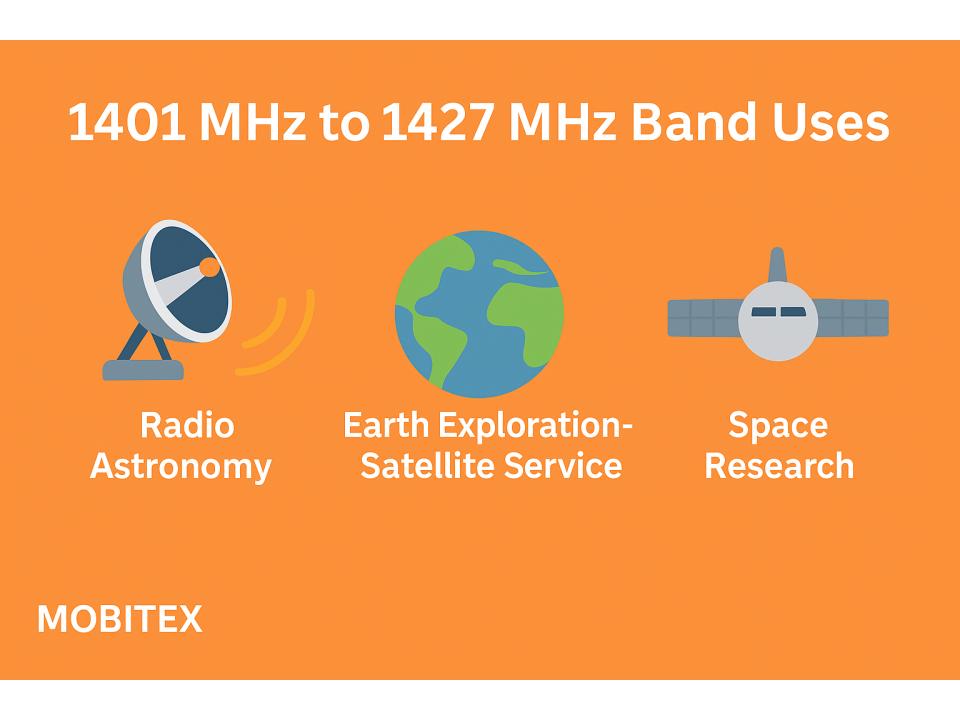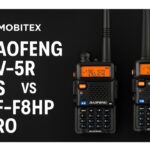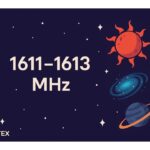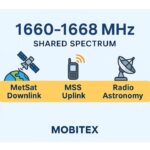The 1400–1427 MHz band is one of the most scientifically important portions of the L-band spectrum. It is home to radio astronomy and passive Earth observation, particularly for studying the universe’s hydrogen line and monitoring environmental changes on Earth. This band is internationally protected from active transmissions, making it one of the quietest and most sensitive windows in the electromagnetic spectrum.
Overview
Spanning just 26 MHz, the 1401–1427 MHz range might seem narrow, but it carries immense scientific value. It includes the 1420.405 MHz hydrogen spectral line—the natural radio emission frequency of neutral hydrogen atoms. This discovery revolutionized astronomy, allowing scientists to map the Milky Way and distant galaxies.

At the same time, this band is used by Earth-observation satellites equipped with passive sensors to measure soil moisture, ocean salinity, and other environmental variables. Because both applications rely on detecting extremely faint natural signals, the band is strictly protected from interference by international regulation.
Primary Services
1. Radio Astronomy (Primary Allocation)
- The 1420.405 MHz “hydrogen line” is one of the most studied frequencies in the universe.
- Radio telescopes use it to detect hydrogen clouds in the Milky Way and other galaxies, revealing the structure and movement of interstellar matter.
- It has been used in landmark projects such as the 21-cm line mapping of the galactic spiral arms and SETI (Search for Extraterrestrial Intelligence).
2. Earth Exploration-Satellite Service (Passive)
- Satellites like NASA’s SMAP (Soil Moisture Active Passive) and ESA’s SMOS (Soil Moisture and Ocean Salinity) operate near 1400–1427 MHz.
- These sensors measure naturally emitted microwave radiation from Earth’s surface to infer soil moisture, ocean salinity, and freeze-thaw cycles.
- Because these measurements depend on detecting weak natural signals, active transmitters in or near this band could corrupt the data.
3. Space Research (Passive)
- Space missions use this band for passive observation of planetary and cosmic radio emissions.
- It provides a window for studying space plasma, galactic radiation, and the composition of planetary atmospheres.
Technical Characteristics
| Parameter | Description |
|---|---|
| Frequency Range | 1401–1427 MHz |
| Wavelength | ~21 cm |
| Bandwidth | 26 MHz protected globally |
| Propagation | Excellent line-of-sight and space transmission; low atmospheric loss |
| Primary Use | Passive sensing and radio astronomy |
| Transmit Restrictions | Active emissions are strictly prohibited (per ITU Footnote 5.340) |
| Typical Equipment | Radio telescopes, radiometers, passive microwave sensors |
Regulatory Context
The International Telecommunication Union (ITU) has designated this band as a passive-only band worldwide.
- ITU Footnote 5.340: “All emissions are prohibited in the frequency band 1400–1427 MHz.”
- This rule ensures radio astronomers and satellite scientists have a quiet spectral environment for measurements.
- National administrations (FCC, ISED, Ofcom, etc.) enforce strict no-transmission policies, often designating large radio quiet zones around observatories.
Real-World Applications
- Galactic Mapping: Measuring hydrogen line emissions to map the structure of galaxies.
- SETI Research: Searching for extraterrestrial signals near the “water hole” (1420–1660 MHz region).
- Soil Moisture Monitoring: Satellites like SMAP measure soil wetness to improve agricultural forecasting and drought prediction.
- Ocean Salinity Studies: ESA’s SMOS mission uses this band to measure global ocean salinity, essential for climate research.
- Earth System Science: Helps model water cycles, carbon exchange, and climate patterns.
Why This Band Is Protected
The natural hydrogen line signal is extremely faint—millions of times weaker than emissions from everyday electronic devices. Even a single radar pulse, Wi-Fi signal, or mobile transmission in this band could overwhelm sensitive receivers.
To preserve its scientific value, all active emissions are prohibited globally. Interference management and international coordination are key to maintaining its integrity.
Summary
The 1401–1427 MHz band is the quiet heart of the L-band spectrum, where humanity listens to the universe and monitors its own planet.
It supports two of science’s most profound endeavors:
- Understanding the cosmos through hydrogen line astronomy.
- Observing Earth’s climate and environment through passive microwave sensing.
In essence, this band represents a global agreement to protect the faintest whispers of the universe – a shared commitment to discovery, science, and the preservation of a truly cosmic frequency.




